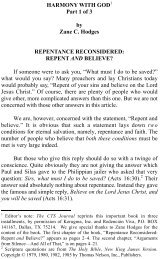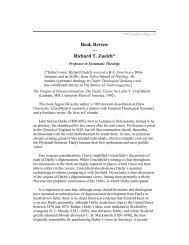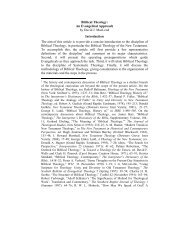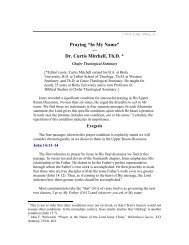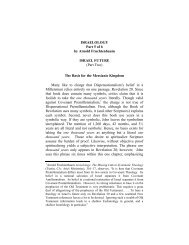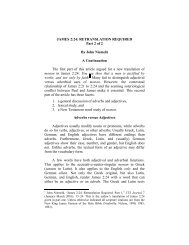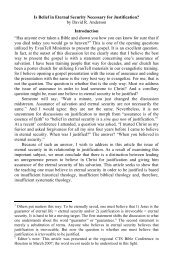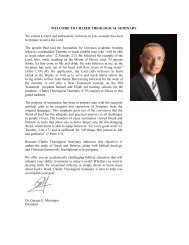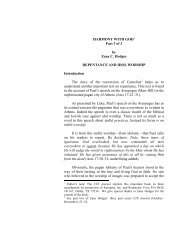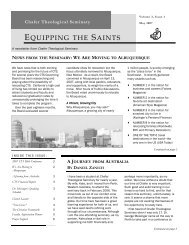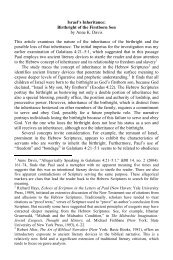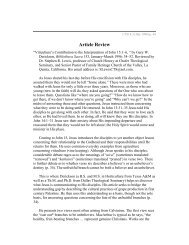ABIDING IN CHRIST - Chafer Theological Seminary
ABIDING IN CHRIST - Chafer Theological Seminary
ABIDING IN CHRIST - Chafer Theological Seminary
You also want an ePaper? Increase the reach of your titles
YUMPU automatically turns print PDFs into web optimized ePapers that Google loves.
Abiding in Christ 17<br />
These same two choices are open in Galatians 5:16–23. A walk<br />
under law necessitates a walk by means of the flesh (cf. Gal 3:2–3;<br />
4:23). At the same time a life lived in the grace system<br />
automatically involves faith and the Holy Spirit (cf. Gal 3:2–3, 5;<br />
4:29). It is for this reason that the contrast here is between the<br />
flesh and the Spirit; they are the two driving forces in each of the<br />
two systems of law and grace. 19<br />
Evidence of this dichotomy is then described in the various<br />
character qualities listed in Galatians 5:19–23. The fruit is the<br />
result of the believer’s process of walking in dependence on the<br />
Holy Spirit. Fruit is character produced by the Holy Spirit, not the<br />
believer. The believer is to abide in Christ, and to walk by the<br />
Holy Spirit, but the Holy Spirit produces the fruit. The believer<br />
may also stop walking by the Holy Spirit and begin operating by<br />
means of the flesh, or the sin nature. These are the only two<br />
options. Therefore, when this principle is compared to the<br />
conclusions from John 15 and 1 John, it is clear that abiding,<br />
fellowship, and walking by means of the Holy Spirit all look at the<br />
advancing Christian life from the same perspective. In contrast,<br />
not abiding, lack of fellowship, and operating by the sin nature<br />
describe the believer living in self–dependence. We must now<br />
relate these conclusions to another category of walking: walking in<br />
the light.<br />
Walking in the Light<br />
Numerous passages use walking as a metaphor for the<br />
Christian life. A noun in the dative or with an “in” (en) clause<br />
often accompany “walk.” The exegete must pay close attention to<br />
the context in determining the precise nuance. In Galatians, the<br />
nuance of instrumentality was necessary due to the nature of the<br />
verbs and the description of the action. In 1 John chapter one, the<br />
apostle does not use a simple dative. Instead, John opts for “in the<br />
darkness” (en to skotei) and “in the light” (en to fotei) to<br />
describe two opposing walks of the believer’s experience (1 John<br />
1:6,7). However, do these clauses indicate sphere or<br />
19 Toussaint, “Contrast,” 312.



